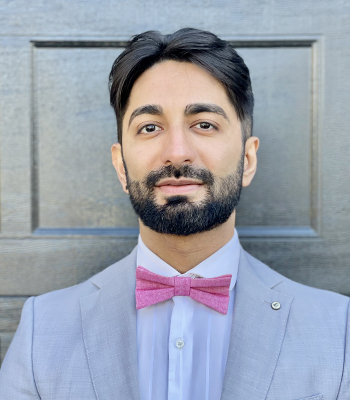Research: Understanding the correlation between HIV and oral health
 by Max Martin, MMJC'19
by Max Martin, MMJC'19
With a passion for public health dentistry, Dr. Abbas Jessani aims to improve the oral health of underserved populations.
In his latest research, Jessani, Assistant Professor, Restorative Dentistry and Director for Oral Health Outreach and Community Engaged Learning, focused on persons living with HIV in Saskatchewan, seeking to better understand factors that impact their access to oral health care.
“People living with HIV are a neglected and underserved group in Canada and internationally, especially in addressing their basic unmet oral health needs,” Jessani said.
Many oral health conditions associated with HIV have declined since the arrival of antiretroviral medications, but those living with the virus still face barriers to basic oral health care services.
In a study recently published in the Journal of Health Care for the Poor and Underserved, Jessani examined the oral health and rates of Decayed, Missing and Filled Teeth (DMFT) of persons living with HIV who received treatment at an inner-city dental clinic in Saskatoon, Sask.
 He analyzed 2,000 patient charts, with about six per cent of patients being HIV positive and three percent who were also co-infected with the hepatitis C virus (HCV).
He analyzed 2,000 patient charts, with about six per cent of patients being HIV positive and three percent who were also co-infected with the hepatitis C virus (HCV).
The analysis found a significant correlation of HIV with the higher DMFT scores, meaning people living with HIV were more likely to have decayed and missing teeth, mainly due to extractions, than their non-HIV counter parts. HIV/HCV co-infection was also associated with a higher number of decayed and missing teeth.
“People with HIV are twice as likely to get dental conditions, including decayed and/or extracted teeth, than those without,” Jessani explained.
His research also found a strong correlation between alcohol and substance use, including smoking, and other medical conditions, such as mental health disorders, among those with HIV/HCV, which are significantly associated with higher rates of DMFT.
“Research shows us oral conditions are not happening in isolation, but are very likely a by-product of the psychosocial disparities and lack of access to basic preventive oral health care,” Jessani said.
Building on his work in Saskatchewan, Jessani’s goal is to expand similar research to the local London and Southwestern Ontario communities.
“What concerns me, being in London, is that we do not have any data on the unmet oral health needs of people living with HIV and other equity seeking groups in London and Southwestern Ontario,” he explained. “In 2015, there was an HIV outbreak in London, particularly within intravenous drug users. We know that we have this population that is living with HIV, and we don’t know how they are doing in terms of their oral health quality of life.”
Jessani said by identifying the oral health challenges faced by those living with HIV, better solutions can be formed, with dental outreach programs playing an important role.
“Concerningly, underserved populations, such as those with HIV, are routinely stigmatized and discriminated against by oral care providers,” Jessani explained. “We must reach out to them in their safe spaces where they feel comfortable, so they won’t feel judged or stigmatized.”
He added teaching dental students about working with such populations is also essential.
“We must train our next generation of oral health care providers on how to provide culturally appropriate and trauma informed care to underserved community members,” he said. “We need to take our dental students to them to experience community-engaged learning while addressing the unmet oral health needs of the community members, such as people living with HIV.”
Focusing on both HIV and oral health prevention is also a key factor, along with improving access to quality care.
“I feel that a problem like this needs a multifaceted approach,” Jessani said. “At the same time this is not something that can be achieved or overcome overnight. We have to work towards risk-based management and person-centred care and start it today, not wait until tomorrow. We really need to understand that there is no health without oral health.”








